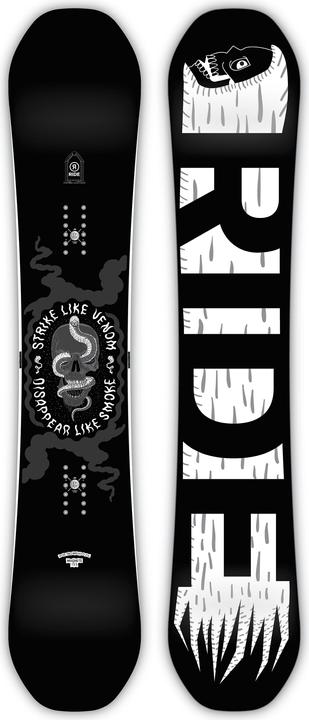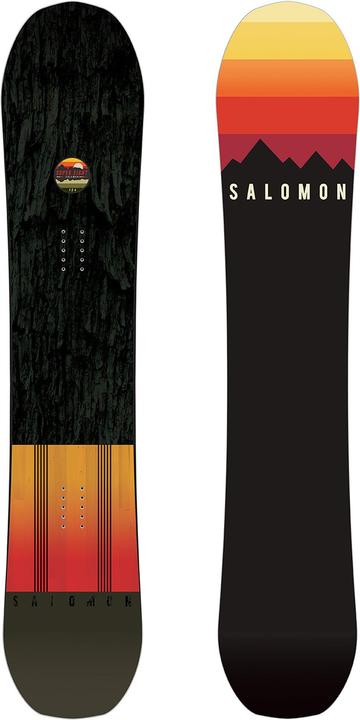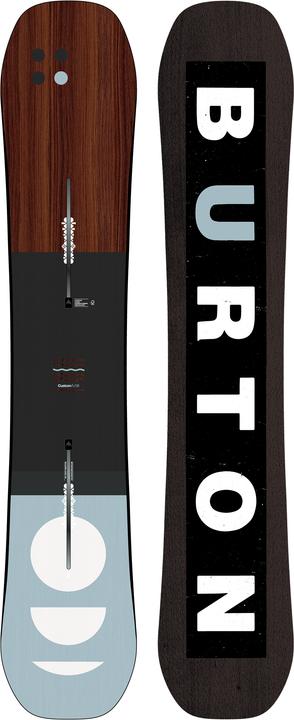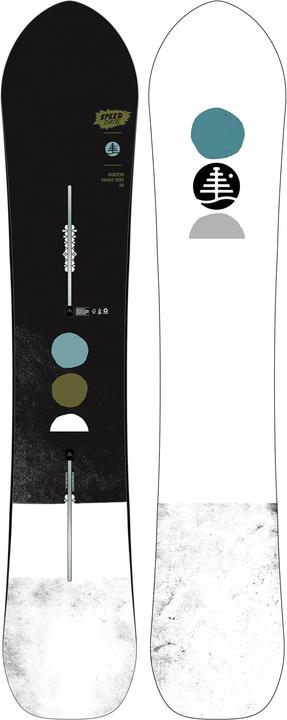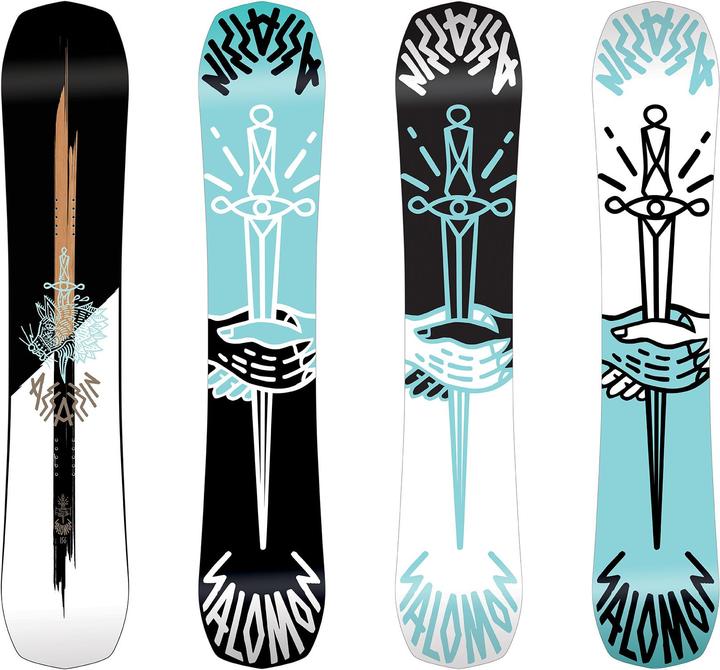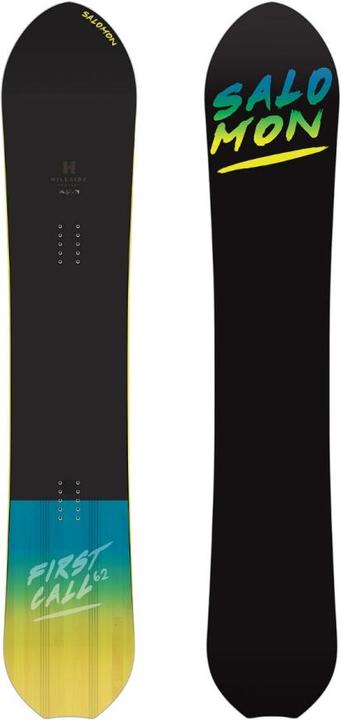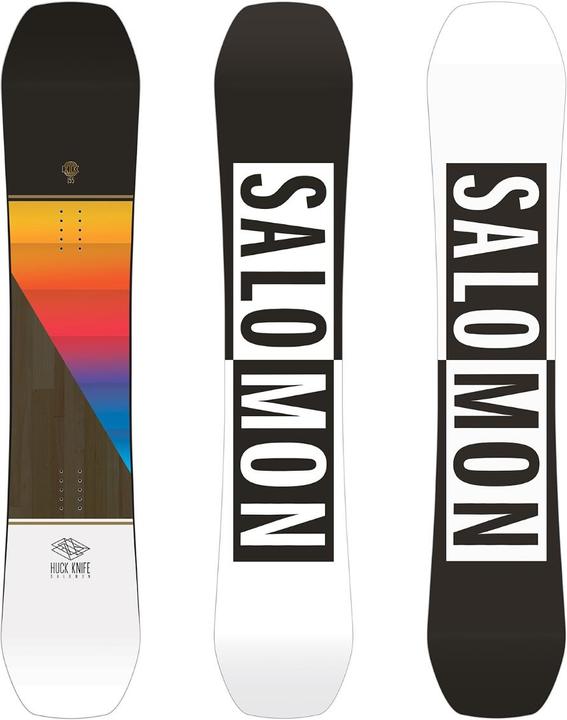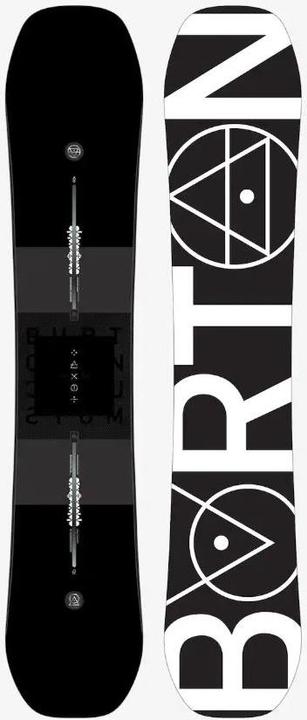

The right snowboard for the right activity
Snow park or powder? Twin tip or directional, rocker or hybrid camber? No idea what I'm talking about? Don't worry. All will be revealed in this round-up of our snowboard range.
The right board turns the mountainside into your own personal playground, enabling you to ride the snow like a surfer rides waves. Your weight, height and riding level determine which board is the right one for you to conquer the piste. These are key factors in picking the right length and flex for your board. Manufacturers such as Nitro, RIDE, K2 and Burton all provide size charts indicating which model is suited to which profile.
The basics
The longer the snowboard, the more stable and grippy it is. As soft boards are more forgiving, they are especially suitable for beginners who don't race down the mountain as rapidly. A hard board, which can hold its line at high speed, is perfect for advanced riders. If you have big boots to fill (literally) – size EU 44 and up – it's worth considering a wide board.
An all-mountain board is a good all-rounder, suited to deep snow, piste and park alike. A freestyle board is the perfect choice for pipe tricks, jumps and rails, allowing you to land safely after a jump. A freeride board demands more power while riding. The main features of freeride boards are a longer length and a nose wider than the tail for greater float in deep snow.
Despite subtle differences, freeride and freestyle boards have similar riding characteristics. The technically sophisticated splitboard is different. It can be split into two for climbing uphill and touring. Special skins on the base of the board stop you slipping back when travelling uphill. Once you reach the top, the two halves are put back together to reform the board and head back down the mountain.
So that you don't get lost in the blizzard of technical terms, use the filter feature in the shop to single out specific profiles, shapes and – especially important for beginners – riding levels. This is an easy way to find the perfect board for your needs.

Profiles
The profile of your board is how it looks lying on the snow from the side. Like the shape, the profile of your board has a significant effect on how it performs in different conditions.
Camber – for powder and grip

Camber is the traditional snowboard profile. Unweighted, it has a gentle upwards curve between the tip and tail. When you put your weight on the snowboard, you have a uniform pressure along the entire board. This profile is excellent for grip and power, such as the «Custom X» by Burton.

Hybrid camber – for freestyle

A hybrid camber such as the «Machete» by Ride has a camber under your body and bindings, with a rocker or flat section at the tips. This profile is particularly well suited to freestyle boards. You get the grip and power of camber needed for taking high speed into kickers in the snow park and jumping high onto features. The rocker or flat sections add forgiveness so you can still ride out of a jump if the landing isn't perfect.
Powder rocker – for float in soft snow

Boards with this asymmetrical profile are specifically designed for deep snow. The «Super 8» by Salomon has a more pronounced rocker in the nose of the board to help you glide in deep powder. The profile is an S-shape with a camber or flat area above or below the back binding. This is often combined with a directional or tapered shape for maximum fun in deep powder snow.
Hybrid rocker – for stability, grip and float

A hybrid rocker has a rocker between the bindings, with a camber in the tip and tail of the board. The rocker enables the snowboard to pivot easily and float in soft snow, while the camber provides the necessary grip. Burton's «Custom Flying V» is suitable for all conditions.
Zero/flat – for stability and balance

These boards lie flat on the snow. A zero profile combines the benefits of a rocker and a camber. A zero snowboard such as the «Prime Toxic» by Nitro has more edge grip than a rockered snowboard and is more agile than a camber snowboard. This balance means that zero profiles are prolific on freestyle snowboards.
All camber profiles // All hybrid camber profiles // All powder rocker profiles // All hybrid rocker profiles // All zero/flat profiles
Shapes
The shape of your board has a big impact on your performance. Certain shapes are especially well suited to all-mountain, freestyle and freeride snowboarding.
Directional – for freeriding and carving on the piste

As the name suggests, this shape is designed for riding forwards. The binding is further back, creating a longer nose and enabling better flotation in deep powder. This shape also gives you more power for carving on the slopes. A directional shape is most common on all-mountain and freeride snowboards, such as the «Ft Speed Date» by Burton.
Directional twin – for tricks anywhere on the mountain

Directional twin snowboards are symmetrical, unlike all other aspects. The binding inserts can have a setback position, or the flex pattern and profile can be designed for riding forwards. A directional twin snowboard such as the «Assassin» by Salomon performs well at the snow park while also offering the versatility needed for all-mountain riding. If you like to do tricks when you’re freeriding, this is the shape for you.
Directional tapered – for maximum float in powder

Salomon also makes the «First Call». This kind of directional tapered board narrows towards the tail. This shape is especially suited to freeride snowboarding because the greater surface area on the nose gives the board more buoyancy.
True twin/twin tip – for freestyle

Twin tip boards are perfectly symmetrical. The nose and tail have the same dimensions and the board rides the same both forwards and backwards. The same goes for the sidecut and flex. You'll mostly find this shape in freestyle and jib boards as it's best suited to parks, kickers and rails. This includes the Salomon «Huck Knife».
All directional shapes // All directional twin shapes // All tapered directional shapes // All true twin/twin tip shapes
What about the bindings?
Finding the right bindings for your board can be a challenge. Different board types, levels of experience and applications determine which type of binding is suited to which snowboard. Snowboard sets can make purchases easier, saving long periods of time searching for the right bindings and potentially saving money with a package price. If you're not sure which bindings are right for your board, we recommend taking a look at our snowboard sets
Find all the snowboards in the Galaxus range here.
From radio journalist to product tester and storyteller, jogger to gravel bike novice and fitness enthusiast with barbells and dumbbells. I'm excited to see where the journey'll take me next.
Practical solutions for everyday problems with technology, household hacks and much more.
Show all